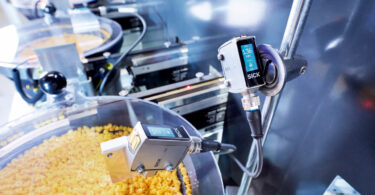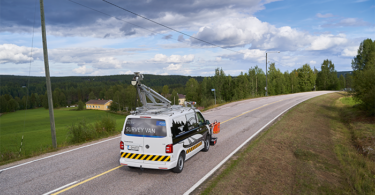Discover how Fabmatics and SICK are making mobile robots safe
Within semiconductor manufacturing, robotics provides a lot of assistance in the day-to-day work within the production process and in cleanrooms. Line-guided, stationary, or mobile robots: autonomous vehicles assist with production and loading/unloading tasks. Fully autonomous vehicles are gaining traction in this industry. In contrast to line-guided systems, they are more flexible and can move around freely within the room.
For the specialists at Fabmatics, mobile robots have already become an integral part of any intelligent robotics solution for transporting wafers – the silicon discs on which microchips are produced. In the case of the freely moving HERO®FAB, the safety laser scanners and photoelectric sensors from SICK play a decisive role in particular in the area of safety and the positioning of the gripper. While not always evident at first glance, they are the hidden heroes of safety in the HERO®FAB.
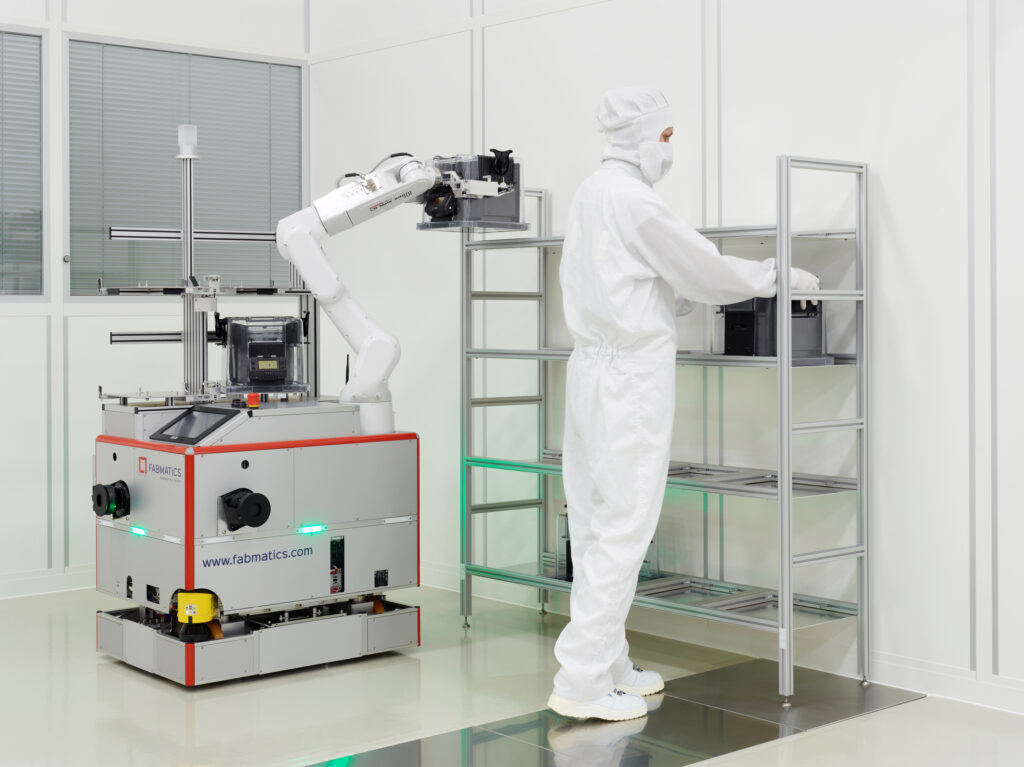
Specialists in semiconductor production
Fabmatics in Dresden, Germany develops intelligent automation and robotics solutions for customers in the semiconductor industry. The company has a unique expertise in supplying complex automation, robotics, and handling systems for use in cleanroom conditions.
“Our various robots are transporting very valuable goods within the semiconductor production environment. It is therefore par for the course that each single one of our robots carries the value of a single-family home ‘on its shoulders,’” said Martin Däumler, Group Manager Product Development & System Integration at Fabmatics.
This makes it even more important to find reliable solutions. The prerequisites for safe mobility can be fulfilled, amongst other things, with the help of partners like SICK who can offer support throughout the lifecycle of the project – from hardware and software, planning and development, manufacturing, installation, and even service support once the project is complete.
For Fabmatics, the S300 Expert safety laser scanner, and in future the microScan3, take care of tasks relating to horizontal and vertical protection within the room. The miniature photoelectric sensors from the W2S-2 family create an intelligent sensor solution for loading and unloading by the grippers – small, smart, and light.
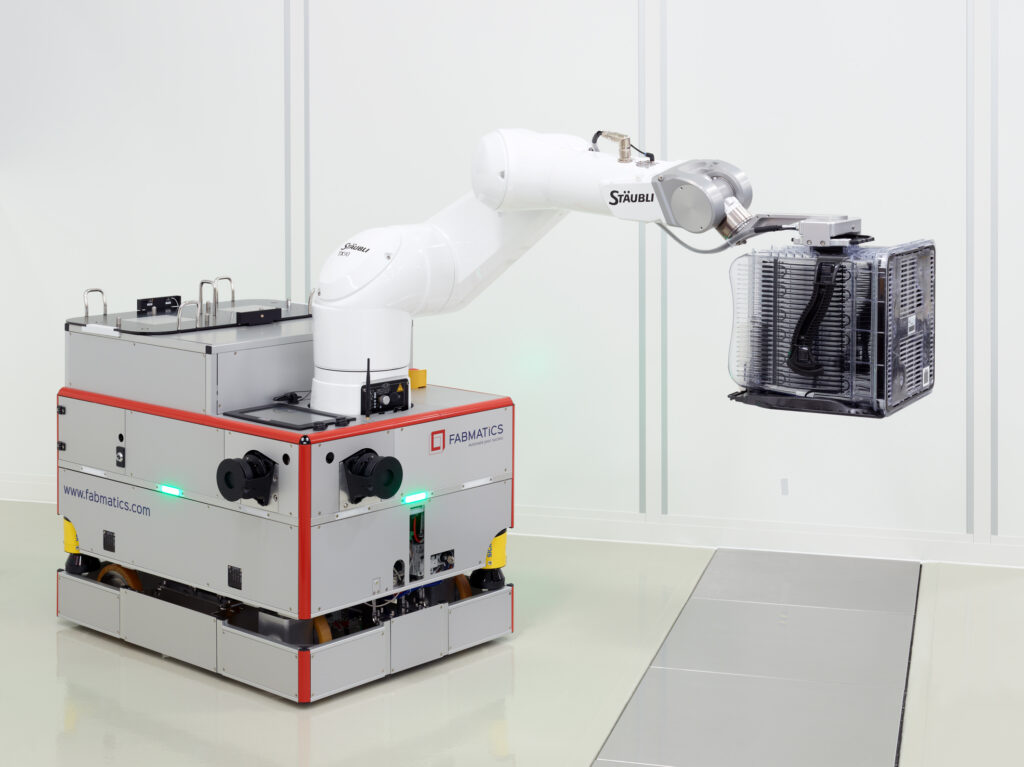
Autonomous Mobile Robots in the cleanroom
The HERO®FAB brings mobility to the cleanroom. It combines an established, clean, and safe robot arm system with an innovative automated guided vehicle platform. It was developed to fully automate tasks like loading and unloading production equipment. In addition, it enables items to be quickly transported between individual process steps and intermediate storage areas within the cleanroom. Specifically, it can move up to four containers at a time – in cleanrooms, these containers are typically used to transport 25 individual 200mm or 300mm wafers.
Special versions of the HERO®FAB with a large 60l water basin are also used. Based on the earlier tried-and-proven HERO®Rail rail solution, the further development of the HERO®FAB now makes it possible to move around freely within the cleanroom without a rail or cable connection. Thanks to the safety laser scanners from SICK, the mobile robot not only fulfills the object safety requirements, but also the most demanding safety requirements for the interaction of humans and machines within the same working space. Various levels of personal safety can be guaranteed depending on the degree of interaction and the local requirements.
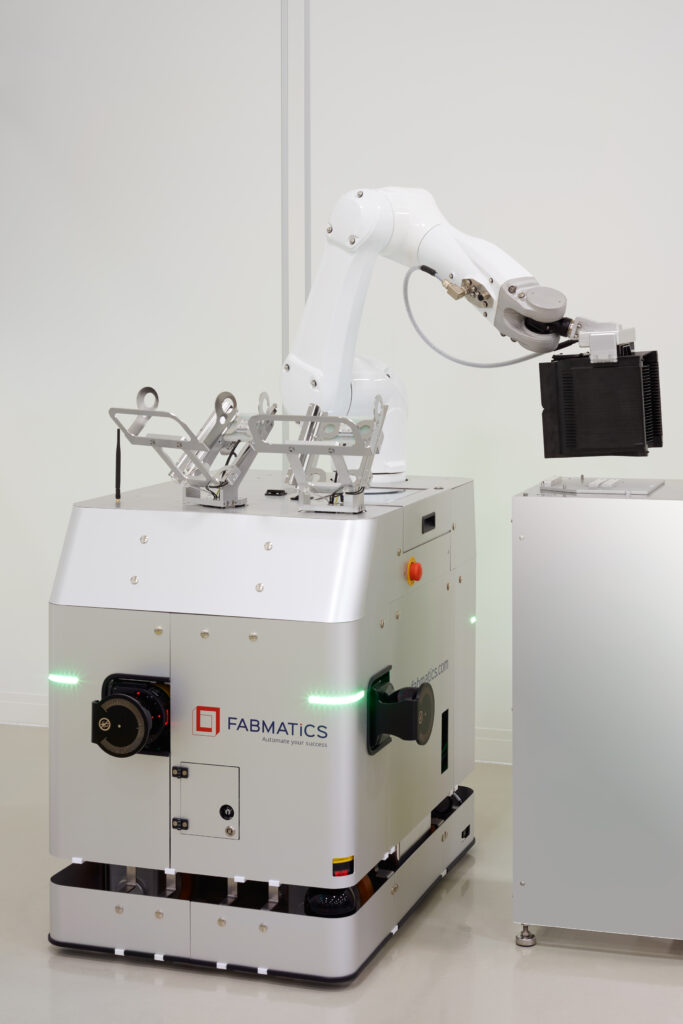
Perfect for small installation spaces
The miniature photoelectric sensors in the W2S-2 family guide the robot arm safely and reliably when gripping the valuable items. The particularly useful aspect is also their size. Installation spaces can often be very tight on mobile robots. The controller already takes up about 80% of the available space inside the robot. That is another reason why the W2S-2 was chosen. The ultra-flat G2 flat sensors can be integrated into miniature systems and very tight installation spaces.
They are also characterized by their outstanding detection thanks to a high-performance background suppression feature. Even very small objects can be detected without difficulty starting at distances of just 8 mm. Jet black, reflective, transparent, and shiny objects can also be reliably detected.
Tried-and-proven interfaces for the future
Ease of installation is another advantage when integrating a safety controller into the mobile robot. The safe EFI-pro System is a targeted further development of the successful EFI interface and enables the mobile robot to be protected in an intelligent manner. The industrial Ethernet-based EFI-pro network technology exchanges and transfer safety and non-safety data at all communication levels.
The central component is the EFI-pro gateway, which ensures safe and fast networking as well as direct integration of robot controllers into the Flexi Soft safety controller via EtherNet/IPTM CIP SafetyTM. The Safe EFI-pro system therefore represents a decisive step forward for digital transformation.
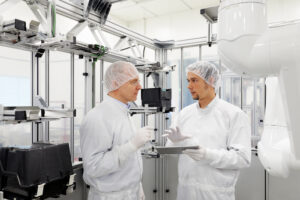
Together into the future
For Martin Däumler and Meik Kettinger, Key Account Manager Electronics & Solar at SICK AG, the technical maturity of the solutions from SICK are a good reason for future collaboration.
“Our R&D is a dynamic process. SICK is an ideal partner, especially when it comes to technical requirements, the preparation of requirements specifications, and fast response times to queries and when exchanging ideas,” said Däumler.
The basis for a successful cooperation is in-depth knowledge and a high level of technical expertise – a certain long-standing flexibility. The partners can then jointly follow the path to success into the future.
Want to learn more about mobile robot applications? Contact a SICK representative today!




